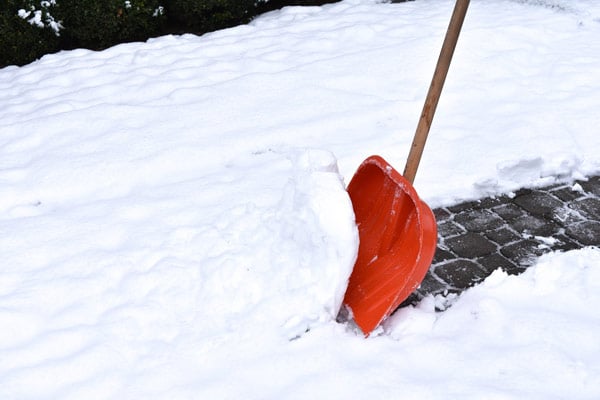Most house moves take place in the summer – and it’s easy to understand why (the weather is nice, the days are long, children are out of school, etc.).
Yet, moving in the winter is not uncommon either – whether by force of circumstances (start of a new job, end of a lease agreement, etc.) or by personal choice, many people move house during the cold season.
In fact, moving in the winter months has a number of benefits – lower moving costs, greater choice of movers, more favorable real estate market, etc. It can even be argued that moving during the winter – and, therefore, moving during the school year – is better for kids than moving during the summer break.
There is, however, one big disadvantage to moving in winter – the weather. Snow, ice, blizzards, and subzero temperatures are definitely not ideal conditions for hauling heavy items around and driving across the country. The harsh weather makes winter moves very difficult – and very risky.
So, if for one reason or another you’ve scheduled a move during the cold season, you need to be ready for the challenge – well-informed, well-equipped, and well-prepared.
Here are some expert winter moving tips to help you out:
Hire professional moving help
Attempting a self-move in the dead of winter is not a good idea – even if you’re moving locally.
If you’re lucky and the weather conditions are mild at the time of your move, performing a DIY-move during the winter won’t be any more difficult than doing so during the summer.
If you’re not so lucky, however, you may need to deal with snow and ice and your self-move may end in disaster – you may damage your belongings, cause damage to your property, or get hurt while loading or unloading a moving truck in the snow, not to mention how dangerous it is to drive on icy or snowy roads.
Therefore, you’re strongly advised to hire professional movers when moving in the winter. The experts have the specialized equipment, proper training, and rich experience to perform a safe move in harsh weather – they will provide the best possible protection to your items against cold and moisture, will efficiently protect the floors in your old home and in your new one, and will be able to navigate the slippery roads without mishaps.
It will be easy to find good, affordable movers for your winter relocation as the demand for moving services during the cold season is lower – and the movers’ rates are likely to be lower too.
See also: Benefits of hiring professional movers
Plan for ice and snow
The chances of ice and snow on moving day are very high when moving in winter, so you need to plan accordingly:
- Check the weather forecast for moving day and monitor it closely – Keep in mind that weather conditions may change very quickly and follow the latest updates, so you know if a blizzard is coming or roads are being closed, etc.;
- Make sure you have the necessary supplies to deal with weather challenges on moving day – snow shovels, sand or salt, plastic sheeting, tarp, etc.;
- Anticipate delays – The weather may cause all kinds of problems on the Big day, so your relocation may take longer than planned. You’re, therefore, advised to schedule your move for the morning, so the movers have more time to complete the work.
Have a backup plan
It is not rare that a winter move is postponed due to extremely bad weather, so you need to have a backup plan in place:
- Discuss the matter with your movers and plan an alternate moving day in case the weather doesn’t allow your move to happen on the pre-agreed date;
- Make arrangements with your real estate agent (or with your landlord) to stay in your old place a few extra days if the weather prevents you from moving out as planned;
- Make sure you have everything necessary to survive for a few days (medications, toiletries, clothes, shoes, etc.) in case your items can’t be delivered on schedule because of blizzards, blocked roads, etc.
See also: How to pack an essentials box for moving
Protect your items against moisture and cold
Snow and subzero temperatures pose a big risk to your items – to ensure their safety, you need to find a way to prevent them from freezing or getting wet during your winter move:
- Use quality packing supplies that will provide good protection to your belongings;
- Wrap your items in several layers of protective materials (thick packing paper, bubble wrap, soft towels, etc.) to provide insulation against the cold;
- Make sure the packing boxes are well-padded and the items in them are cushioned on all sides – for better insulation;
- Pack items vulnerable to water damage (electronics, artwork, paper items, etc.) in plastic moving boxes;
- Seal the packing containers tightly so that snow and cold air cannot get inside;
- Cover cardboard boxes with plastic wrap or other waterproofing materials (plastic sheets, tarp, etc.) to keep moisture away;
- Wrap furniture, appliances, and other larger household items in thick moving blankets (to protect them from the cold) and plastic wrap (to protect them against moisture);
- Have your most delicate and most valuable items professionally packed, so they have maximum protection against the elements.
Protect the floors
When moving house in the snow, you need to protect not only your items, but your property too – people will be going in and out of your home on moving day, tracking snow, slush, and mud inside. The floors and stairs will become messy, wet, and slippery – so the risk of accidents will increase. Besides, the floors will be very difficult to clean after the move – and may even get ruined by the moisture and dirt.
It is, therefore, essential to take measures to keep the floors clean and protected during the move:
- Line the entryway with old rugs and towels;
- Cover the floors with tarps, plastic sheets, large pieces of cardboard, or other protective materials;
- Have a couple of people stay inside and hand off boxes and items to the movers outside (who will be loading your goods into the moving truck).
See also: How to protect floors when moving
Keep the pathways free of snow and ice
In order to prevent injuries and damages when moving in snowy weather, it’s crucial to keep the driveway and walkways around your home free of snow and ice – so the movers have sure footing when taking your belongings to the moving truck and there is no risk of someone slipping and falling, potentially hurting themselves and breaking the items they’re carrying.
If there is snow in your destination, you’ll need to clear a parking space for the moving truck and a pathway to your new home as well. If you’re moving locally, visit your new place the day before moving day and shovel the snow away. Salt or sand the area to make sure the driveway and walkways will be free of snow and ice the next day. If you’re moving long distance and can’t do the job yourself, pay someone in your new area to remove the snow from around your new property before the movers arrive.
Bonus tips for moving in winter
- Make sure the utilities in your new home will be up and running on move-in day – it’s crucial to have electricity, gas, and water when you arrive at your new place on a cold winter day. See also: How to change utilities when moving
- Choose comfortable, warm clothes for moving day and be sure to dress in layers so you can shed some clothing in case you get hot. Don’t forget to put on a hat and gloves. Wear sturdy, waterproof boots with spikes and non-skid soles that will provide support and traction and will keep your feet dry and warm.
- Prepare hot beverages for everyone involved in the move.
- Make sure everyone takes breaks to warm up – keep a small room in the house well heated for the purpose.
- Remove snow from your items as soon as they’re loaded on the moving truck or taken into your new home.
- If you’re moving a lot of temperature-sensitive items, consider requesting a climate-controlled moving truck so your delicate belongings stay at a moderate temperature during the entire move.
- If you’re moving across the country and driving to your new home, have your car serviced and winterized before the move.
- Plan your travel route with care – stick to major roads that are well maintained, find out the locations of overnight accommodations along the way, so you know where you can stop if the weather gets worse, check the conditions along your travel route before you depart to ensure that the roads are passable, etc.
- Pack a winter survival kit and take it in your car with you – include a snow shovel, an ice scraper, a bag of sand or de-icing salt, a spare tire, a few jumper cables, a tow rope, emergency flares, a first-aid kit, a tool kit, a flashlight, a few cozy blankets, bottled water, non-perishable snacks, and some warm clothing for all family members, as well as an emergency contact list.
Now that you know how to move in the winter, your snowy relocation adventure is sure to go smoothly and successfully. Good luck!











